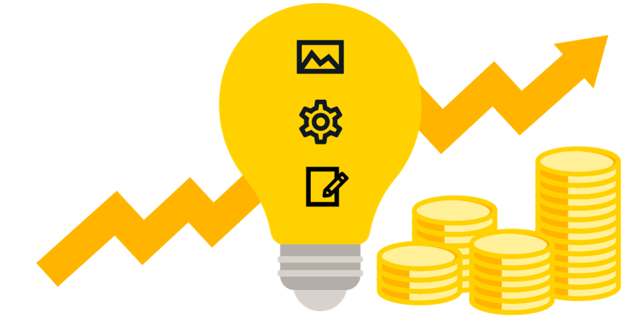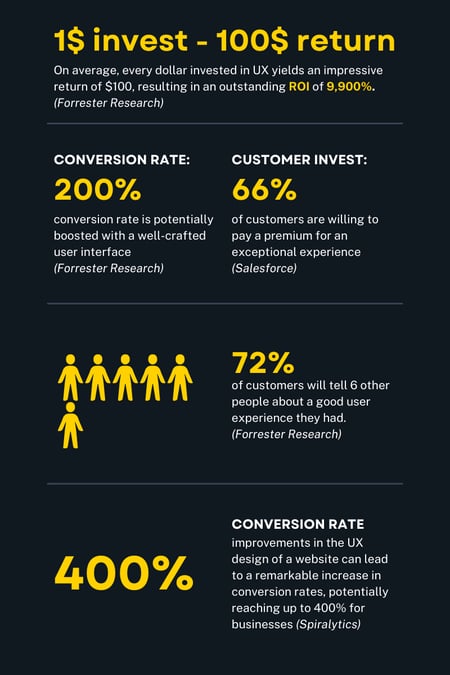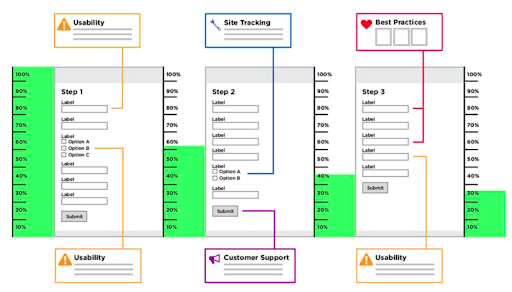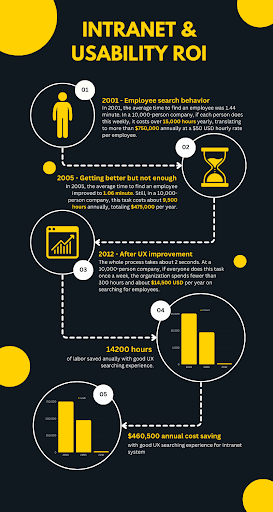Achieving ROI with UX design

User experience (UX) extends far beyond the creation of visually appealing interfaces. When striving for brand success, some companies prioritize UX while others don't. Yet, there's often uncertainty surrounding the financial return of UX design and how it impacts businesses.
This uncertainty often stems from several factors, including the duration required for a UX-centric strategy to yield measurable results, the relatively recent emergence of UX as a field, and the varying degrees of awareness around UX principles.
Nevertheless, for those who may still have skepticism about the transformative potential of UX, it's crucial to review compelling data that underscores the substantial influence it can exert on businesses:

1. Outstanding return on investment (ROI): Findings from a paid report by Forrester research revealed that, on average, every dollar invested in UX yields an impressive return of $100, resulting in an outstanding ROI of 9,900%.
2. Enhanced conversion rates: According to Forrester research, a well-crafted user interface has the potential to boost website conversion rates by up to 200%.
3. Customer willingness to invest: Salesforce reports that a remarkable 66% of customers are willing to pay a premium for an exceptional user experience.
4. Revolutionized conversion rates: According to Forrester research, improvements in the UX design of a website can lead to a remarkable increase in conversion rates, potentially reaching up to 400% for businesses.
Unlocking your usability ROI: The key to securing buy-in across the board
Now, you might be curious about how to calculate the return on investment for UX design. In general, there are two primary scenarios where you might want to calculate usability ROI:
1. When customers are the users of the product
Now, let's explore a real-world case study to illustrate how UX design can enhance ROI. In his book "Web Form Design: Filling in the Blanks," Jared M. Spool recounts an instance where a minor modification in the design of a form resulted in a staggering $300 million increase in revenue for an e-commerce website.

The website had been suffering substantial revenue losses due to a poorly designed checkout process. However, the challenge was that the team was initially unaware of the underlying issue.
Consequently, the company decided to undertake usability testing to identify the problem. Upon testing the website, the team discovered that users were reluctant to register; they simply wanted to complete their purchase and exit the website swiftly.
In response, the design team proposed a strategic change to enhance trust and safety for users by replacing the "register" button with a "continue" one. Additionally, they included a message to reassure users that they didn't need to create an account to make purchases on the website. Instead, they could click "continue" to proceed to checkout without registration.
This change aimed to eliminate the perceived barrier of account creation that many users found off-putting. The outcome of this seemingly minor adjustment was remarkable; sales surged by 45% in the first month, resulting in an additional $15 million in revenue. This change ultimately led to a substantial overall revenue increase of $300 million.
However, in the case where customers are the users of the product, the benefits are usually more indirect but equally influential. Reducing the time required for essential task completion by 20% may not immediately result in increased transactions, but over time, it can foster loyalty, attract new customers through word-of-mouth referrals, and ultimately boost revenue.
According to Spiralytics, it's also noteworthy that 72% of customers are likely to recommend your brand to six others after experiencing a positive user experience.
2. When employees of the company are the users of the product
In such instances, the process is relatively straightforward. You typically have access to information regarding employee salaries, enabling you to directly translate time saved in completing tasks, especially repetitive ones, into tangible cost savings.
Let's dive deeper into a real-life case study about how UX improvements for intranet searching helped companies save hundreds of thousands of USD annually.
Searching for employees is the most frequent task when coming to the intranet. When looking at the history of searching behavior on the intranet system, we can clearly see how UX improvements have brought financial returns for companies.
According to NN Group, in 2001, employee information retrieval on intranets was time-consuming, involving PDF searches and potentially outdated data, costing a 10,000-person company over $750,000 annually.
By 2005, improvements like open text-based employee searches reduced the time to one minute and six seconds but still cost the organization $475,000 per year.
From 2012 onwards, significant progress was made, with innovations like instant people suggestions and merging intranet-wide and employee search. Now, the process takes just two seconds, costing a 10,000-person company less than $14,500 a year.
Implementing effective search-suggestion features can lead to substantial cost savings for organizations and more productive use of employee time.

The balancing act: Navigating user experience and business value
The relationship between user experience and business value can be likened to a balancing act, where one side is occasionally more important than the other.
The ultimate goal for any company is profitability, guided by key performance indicators (KPIs). During the initial stages, especially for startups, prioritizing the user experience is critical to attract the first wave of users.
However, this user-centric approach may be sustainable for a limited period. As the pressure to increase revenue mounts, the focus on user experience may decrease. When the main goal is making as much money as possible, sometimes the focus on giving users the best experience takes a backseat.
In this situation, efforts should be divided between growing as much as possible and making sure quality stays high. This balance is essential not only for long-term sustainability but also for leveraging user feedback and effectively differentiating your product in the competitive market.
Integrating UX into your strategy
The statistics and case studies in this blog post underscore the significant value of UX design in impacting essential business metrics, which are the persuasive advantages of embracing UX.
The question isn't whether or when to adapt to the UX shift; it's about seamlessly integrating UX into your overall strategy. The early adopters of this innovation gain a significant competitive edge, and the transformational benefits of an effective UX strategy are undeniable.
To learn how to be agile and create a great user experience, check out this blog post.
Published:
Updated:


